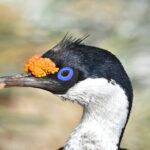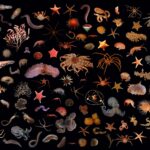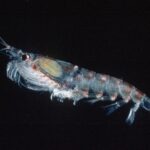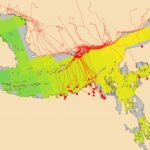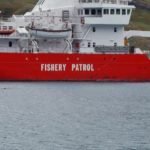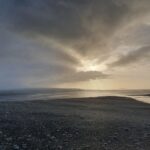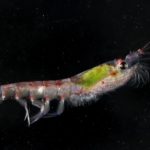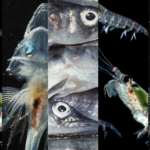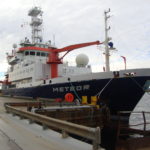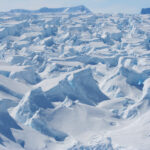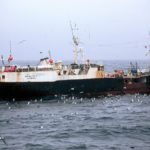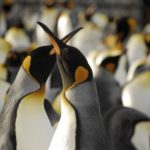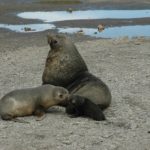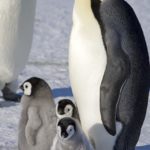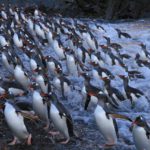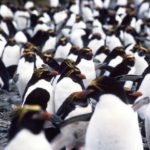Remote and hostile, Antarctica harbours some of the most amazing creatures on the planet. It is also a powerful natural laboratory for studying biodiversity, evolution and the impacts of climate change. Cut off from the rest of planet, Antarctica’s isolation and its cold climate have allowed some unique species to evolve.
Mostly covered in ice and snow, Antarctica is the driest, coldest and windiest continent on Earth. Little of its land surface can support life, so the communities of plants and animals that survive there consist of only a small number of species living in simple relationships. Because of the simplicity of these communities, Antarctica is an exceptionally useful place for scientists to uncover how ecosystems work.
Some of the creatures in these communities are particularly interesting. Known as nematodes, their ancestors survived on tiny areas of land left uncovered during the last ice ages, more than one million years ago. By studying these nematodes, scientists at British Antarctic Survey (BAS) are able to increase our understanding of evolution and help reconstruct Antarctica’s glacial history.
Unlike the land, the seas around Antarctica are home to a rich and diverse group of species that have evolved some unique ways of coping with the cold. Some Antarctic fish, for example, are the only vertebrates in the world that do not use red blood cells to carry oxygen around their bodies.
But because they are so well adapted to the cold, some of these species may not be able to cope with life in a warmer world. Climate change is likely to have a major impact on Antarctic species. From their research stations on and around the Antarctic Peninsula – one of the fastest warming parts of the planet – BAS scientists are well placed to study how these species are responding to climate change.
Compared with our understanding of the continent’s plants and animals, we know very little about Antarctica’s microbial life. Invisible to the naked eye, these organisms play a vital role in Antarctic ecosystems and, because they may help us produce new antibiotics and other compounds, are rich but untapped resource. At BAS, scientists are using state-of-the-art genetic methods to study the DNA of these microbes and, hopefully, harness their potential.
Globally-important populations of seabirds breed at South Georgia. However, human-induced impacts have led to the decline of many seabird populations. Four species of albatrosses and white-chinned petrels have shown persistent …
The evolution and ecology of Antarctic sea floor communities is a UKRI Future Leaders Fellowship, led by Dr Rowan Whittle, looking at the past, present and future of life at …
Whales are the largest krill predators in the UK Overseas territory of South Georgia, yet their impacts on krill stocks are poorly understood. Recently, whale surveys revealed high summer abundance …
CONSEC is addressing the challenge to understand the links between the biodiversity, structure and function of Southern Ocean ecosystems and the impacts of rapid environmental changes to improve scientific knowledge …
In the AI for smart conservation project, BAS are collaborating with local ecologists and conservation agencies to develop decision-making tools informed by sea ice forecasts. By combining satellite observations, GPS …
The South Georgia Pelagic Biodiversity project is a Darwin-funded project, led by BAS, and in partnership with the Government of South Georgia and the South Sandwich Islands (GSGSSI) and the …
The polar regions are experiencing the most rapid climate change observed on Earth: temperatures are rising in some regions of the Arctic and Antarctic at more than double the global …
This Darwin Plus funded project aims to improve our understanding of how Antarctic krill, foraging whales and the krill fishery interact in space and time, to improve krill fishery management …
Fish bycatch is a global problem requiring accurate information to develop conservation and management strategies. Within the Antarctic krill fishery, fish and larval fish are regularly observed as bycatch. Improved …
The HEXPLORES project aims to explore for active hydrothermal vents in the Red Sea Rift. Although the Red Sea Rift hosts the world’s largest submarine metalliferous sulphide deposit, no active …
Page 1 of 51
2
3
…
5
»Last »
1 June, 2023
Concern is rising about tipping points in the Antarctic region (Armstrong et al., 2022). Recent heatwaves, changes in the Southern Ocean, and a reduction in the extent of Antarctic sea …
Page 1 of 4091
2
3
…
409
»Last »
11 December, 2014
Seabird poo has unique spectral signature visible from satellite images Scientists have discovered that penguin and seabird poo (guano) from colonies around the Antarctic Peninsula has a unique spectral signature …
16 September, 2014
South Georgia Patagonian toothfish fishery recertified with flying colours Following its five-yearly Marine Stewardship Council (MSC) assessment, the South Georgia Patagonian toothfish longline fishery has, for the third time, been …
6 August, 2014
Risks to penguin populations analysed A major study of all penguin species suggests the birds are at continuing risk from habitat degradation. Writing in the journal, Conservation Biology, a group …
23 July, 2014
Genetic study shows major impact of climate change on Antarctic fur seals Genetic analysis of Antarctic fur seals, alongside decades of in-depth monitoring,* has provided unique insights into the effect …
24 June, 2014
New research using satellite images reveals that emperor penguins are more willing to relocate than previously thought A new study led by the University of Minnesota offers new insights on …
12 June, 2014
Rise and fall of prehistoric penguin populations charted The British Antarctic Survey has been involved in a study of how penguin populations have changed over the last 30,000 years. This …
28 May, 2014
We caught up with Bird Island Research Station Leader Adam Bradley who was living and working on the island when the BBC crew came to film Deadly Pole to Pole. …
27 May, 2014
Deadly Pole to Pole at Bird Island Tune in to CBBC today at 5:25pm to see adventurer Steve Backshall on Bird Island as part of the BBC’s Deadly Pole to …
21 May, 2014
Electronic tags provide 10 years worth of penguin data A team of scientists, led by researchers from the British Antarctic Survey, has used tiny electronic tags to study the decline …
18 March, 2014
Lessons from a remote Antarctic island on the vulnerability of ecosystems Scientists have carried out new research that could change the way we think about the vulnerability of ecosystems. Published …
Page 18 of 20«
1
…
16
17
18
19
20
»Last »
